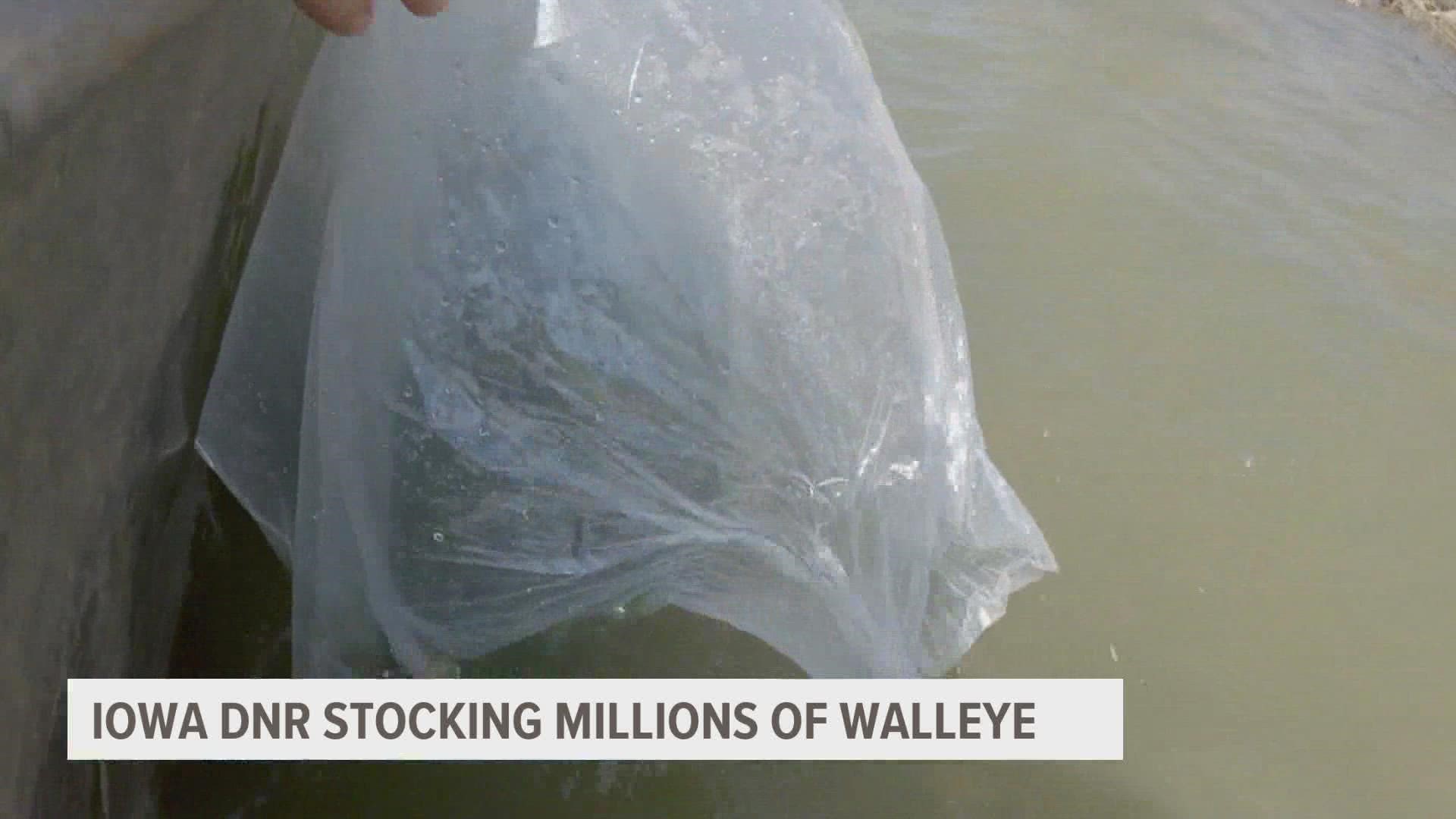IOWA, USA — As the summer heat finally rolls in, it's tempting to take advantage of the water at local and state parks to cool off. Taking your family to the beach is a great way to spend a hot afternoon, so long as you make sure it's safe to swim in the water.
Beaches in Iowa the last few years have faced consistent swimming advisory warnings from the Iowa Department of Natural Resources. These warnings indicate the water at that beach has been contaminated and is no longer safe to swim in, though it does not prohibit people from swimming anyway.
Just in the first week of June 2022, Iowa DNR assigned swimming advisory warnings to nine beaches, including: Backbone Beach, Beed's Lake Beach, Denison Beach, Lake Darling Beach, Lake Macbride, Sugar Bottom Beach, McIntosh Woods Beach, North Twin lake West beach and George Wyth Beach.
In 2021, the Iowa DNR issued an advisory warning for Lake Red Rock due to high bacteria levels. The same thing happened in 2020. And in 2019, eight beaches earned an advisory warning telling Iowans it wasn't safe to swim due to dangerously high levels of the bacteria known as E. Coli.
According to Iowa DNR's website, swimming in contaminated water can make you sick. Typical illnesses you can contract from contaminated water include diarrhea-causing diseases, as well as infections in your skin, ears or respiratory system.
Statistically, the risk of getting sick from swimming at an Iowa beach is not high. Iowa DNR says on their website that "thousands of people swim at Iowa's beaches every year and most of them do not get sick." But it also cautions that children, elderly people and people with weakened immune systems are more at risk of getting sick from swimming in contaminated water.
It's always worth making sure your river or lake doesn't have an advisory on it before you head out.
So, how can you make sure something is safe to swim in?
Be on the lookout for signs posted at beaches where Iowa DNR or the U.S. Army Corps of engineers has issues an advisory warning. Additionally, Iowa DNR has an interactive water quality monitoring map you can use to check whether your water is safe to swim in before you go out.
You can also call the DNR Beach Monitoring Hotline at (515) 725-3434 to get the most current advisory on a body of water.
Some beaches have specific hotlines to call, including Saylorville Lake (515-276-4656), Lake Red Rock (641-828-7522) and Coralville Lake (319-338-3543). Frequent swimmers can also sign up for the Iowa Environmental Council's Weekly Water Watch newsletter for the summer season to get updates.
There are other recommended precautions to take to make sure you are staying safe:
- Don't swim after heavy rainfall, which is when the indicator bacteria Iowa DNR tests for is at its highest and when the water is most murky
- Try not to swallow any of the water you swim in
You can also help keep others safe. Human fecal matter is one of the things that can contaminate the water at public beaches. If you are bringing a child still in diapers, change their diaper and visit the restroom frequently to prevent them from contaminating the water. And if you or any of your family members have diarrhea, don't swim in the water — those with diarrhea are much more likely to spread fecal matter in the water.
Monitoring the water at Iowa's beaches happens from the weekend before Memorial Day through Labor Day weekend.
Here's how it works:
Every week, the DNR collects samples from 39 state-owned beaches. The U.S. Army Corps of Engineers, Rock Island District conducts weekly monitoring at Coralville, Saylorville, and Red Rock lakes, using the same standards as Iowa DNR. Workers take a sample each from ankle-deep water, knee-deep water and chest-deep water, combine the three samples, and send it to a lab for analysis.
The lab does not test for bacteria like E. Coli directly because that process is too long and expensive to be practical. Instead, it tests for indicator bacteria, which, when they appear, are a sign that the water has come into contact with pollutants like sewer water or manure runoff. Iowa DNR also tests for cyanobacteria, also known as blue-green algae, which, when it blooms, can sometimes produce a harmful toxin called microcystin.
When the level of microcystin in the water is higher than eight micrograms per liter, or the E. Coli level is higher than 235 colonies per 100 milliliters of water, a swimming advisory is issued for that particular beach. Additionally, if five successive samples from one beach exceed an average of 126 colonies of E. Coli per 100 milliliters of water, Iowa DNR will also issue an advisory warning.
This monitoring program began in 2006. The Iowa Environmental Council, in a 2021 study of the resulting data, found that the number of annual swim advisories has increased "dramatically" since the start of the program.

